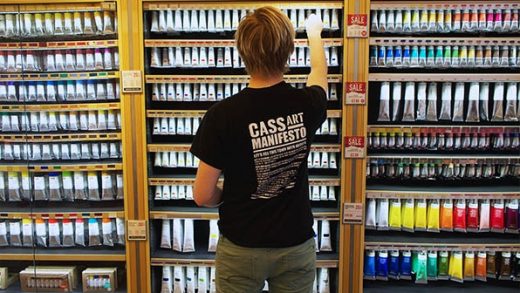The Ultimate Guide to Heat Resistant Spray Paint: Uses, Benefits, and Safety Tips
When it comes to safeguarding surfaces from extreme heat, few products can compete with the practicality of heat-resistant spray paint. This specialized paint can withstand intense temperatures, from automotive engines to BBQ grills, and even industrial machinery, making it invaluable in various industries and home projects. Let’s explore what makes heat-resistant spray paint so versatile, where it’s best used, why it’s essential, and how to apply it safely for maximum durability and protection.
Contents
What is Heat Resistant Spray Paint?

As the name suggests, heat resistant spray paint is a coating specifically formulated to endure high temperatures without cracking, bubbling, or losing its colour. Unlike standard paints that may deteriorate when exposed to heat, these paints are engineered with silicones and other heat-tolerant ingredients, ensuring that they can withstand temperatures up to 650°C or more. The result is a resilient surface that maintains its integrity and appearance even in extreme conditions.
Where is Heat Resistant Spray Paint Used?
Heat-resistant spray paint has a broad range of domestic and industrial applications. Here are some common areas where you’ll find it useful:
- Automotive Applications
In the world of automotive, heat-resistant spray paint is essential for components like exhaust pipes, engine blocks, and brake calipers. These parts endure constant high heat due to friction and engine operation, and the paint not only keeps them looking fresh but also provides a protective barrier against rust and corrosion. - Home Appliances and Cooking Equipment
If you’ve got a BBQ grill, an outdoor fireplace, or even a wood stove, heat-resistant spray paint is your best friend. Applied to surfaces exposed to open flames or intense heat, this paint prevents deterioration, helping your cooking equipment maintain its look and functionality. - Industrial and Manufacturing Uses
Heavy machinery, furnaces, and production line equipment in industrial settings often require heat-resistant coatings. These surfaces can reach extreme temperatures during operation, and heat-resistant spray paint protects the equipment, extending its lifespan and reducing maintenance costs. - Outdoor Structures and Metalwork
Think outdoor fire pits, chimneys, or metal structures exposed to the sun and fluctuating weather conditions. Heat-resistant spray paint shields them from weather-induced heat damage and adds a layer of protection against rust, making it perfect for outdoor durability.
Why Use Heat Resistant Spray Paint?
The primary reasons to use heat-resistant spray paint go beyond aesthetics. Here are the main benefits:
- Protection Against High Temperatures
Regular paint can’t withstand high heat and will crack, peel, or discolour when exposed to extreme temperatures. Heat-resistant spray paint, however, maintains its integrity even under intense heat, offering durable protection. - Prevents Rust and Corrosion
Many high-heat areas are also prone to moisture and exposure to the elements, leading to rust. Applying a heat-resistant coating creates a barrier against moisture, helping to prevent corrosion over time. - Improves Longevity of Equipment and Surfaces
By resisting the effects of heat, moisture, and corrosion, heat-resistant spray paint extends the lifespan of the surfaces and equipment it covers, reducing the need for frequent replacements or repairs. - Aesthetic Appeal
Beyond functionality, heat-resistant spray paints are available in various finishes and colours, from matte blacks to metallic shades, allowing you to customise the look of your equipment or surfaces while also protecting them.
How to Apply Heat Resistant Spray Paint Safely
Using heat-resistant spray paint requires attention to detail and safety precautions to ensure that you get a quality finish without health risks. Follow these steps for the best results:
- Choose the Right Paint for Your Project
Heat-resistant spray paints come with different temperature ratings, so make sure to pick one suitable for the level of heat exposure expected. For example, automotive exhaust pipes may require paint with a higher heat tolerance than a backyard grill. - Prepare the Surface
Preparation is key for any paint job, especially one involving high temperatures. Ensure the surface is clean, dry, and free of any dirt, grease, or rust. Use a wire brush or sandpaper to remove loose rust or old paint. Degrease the surface with a suitable cleaner and allow it to dry completely before applying the spray paint. - Work in a Well-Ventilated Area
Spray paints, including heat-resistant varieties, emit fumes that can be harmful if inhaled in large quantities. Always work in a well-ventilated area, ideally outdoors or in a space with exhaust fans. Wear a respirator mask to protect yourself from inhaling fumes, particularly if you’re working indoors or in a confined space. - Wear Protective Gear
Protect your eyes, skin, and respiratory system by wearing safety goggles, gloves, and a respirator mask. These items provide essential protection from paint splatter, fumes, and potential skin irritation caused by the chemicals in the spray. - Apply the Paint in Thin Layers
For an even and durable finish, apply the paint in multiple thin layers rather than one thick coat. Hold the can approximately 20-30 cm away from the surface and spray in a steady, sweeping motion. Let each layer dry according to the manufacturer’s instructions before applying the next coat. Multiple thin layers provide better adhesion and prevent drips and runs. - Cure the Paint if Required
Some heat-resistant paints require curing, a process where heat is applied to harden the paint and make it resistant to extreme temperatures. The curing method may vary by product, so read the instructions carefully. In some cases, this involves gradually heating the surface in stages, which helps the paint bond firmly and perform optimally under high heat conditions.
Safety Tips for Using Heat Resistant Spray Paint
- Read the Label: Every can of heat-resistant spray paint comes with specific instructions, including temperature ratings, curing recommendations, and application tips. Adhering to these guidelines ensures both safety and quality results.
- Avoid Open Flames: While heat-resistant spray paint can handle high temperatures after drying and curing, applying it near open flames or heat sources is dangerous. Only paint in a safe area, away from any sources of ignition.
- Dispose of Cans Properly: Spray paint cans are considered hazardous waste. Follow local disposal guidelines to safely dispose of empty or unused cans, as they are often not recyclable with regular household waste.
Final Thoughts

Heat-resistant spray paint is a practical solution for anyone needing durable protection against high temperatures. Whether you’re touching up an exhaust pipe, rejuvenating a BBQ grill, or safeguarding industrial machinery, the right spray paint can make a world of difference. By following proper preparation and safety guidelines, you’ll achieve a finish that not only looks great but stands the test of time and temperature.
Heat-resistant spray paint opens up a world of possibilities, blending aesthetics with functionality. From extending the life of metal surfaces to enhancing the appearance of high-heat areas, it’s a versatile tool in both DIY projects and professional applications. So, next time you’re faced with a heat-exposed surface, consider the benefits of heat-resistant spray paint—it’s a small investment that goes a long way in protecting your equipment and surfaces.

















